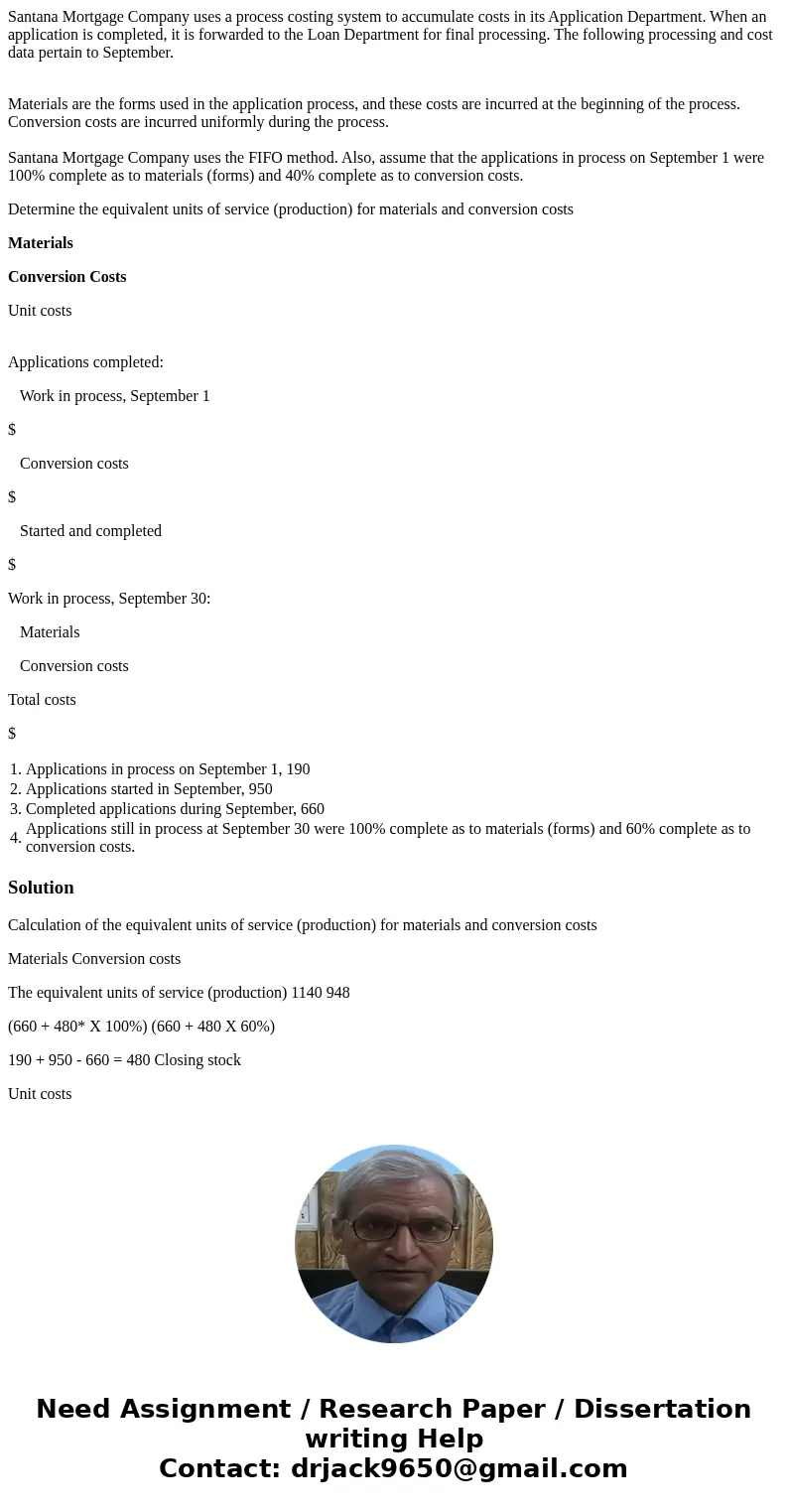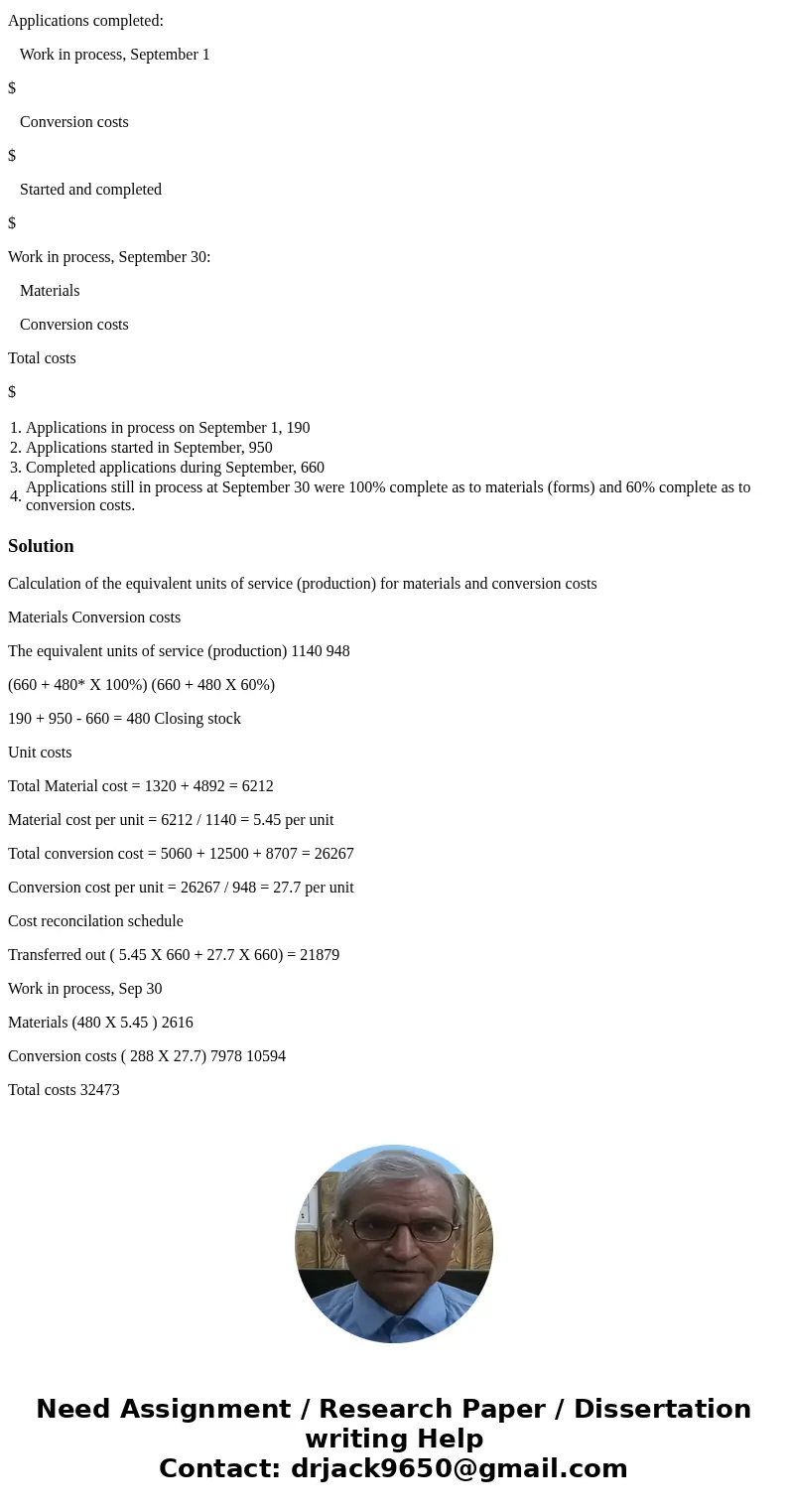Santana Mortgage Company uses a process costing system to ac
Santana Mortgage Company uses a process costing system to accumulate costs in its Application Department. When an application is completed, it is forwarded to the Loan Department for final processing. The following processing and cost data pertain to September.
Materials are the forms used in the application process, and these costs are incurred at the beginning of the process. Conversion costs are incurred uniformly during the process.
Santana Mortgage Company uses the FIFO method. Also, assume that the applications in process on September 1 were 100% complete as to materials (forms) and 40% complete as to conversion costs.
Determine the equivalent units of service (production) for materials and conversion costs
Materials
Conversion Costs
Unit costs
Applications completed:
Work in process, September 1
$
Conversion costs
$
Started and completed
$
Work in process, September 30:
Materials
Conversion costs
Total costs
$
| 1. | Applications in process on September 1, 190 | |
| 2. | Applications started in September, 950 | |
| 3. | Completed applications during September, 660 | |
| 4. | Applications still in process at September 30 were 100% complete as to materials (forms) and 60% complete as to conversion costs. |
Solution
Calculation of the equivalent units of service (production) for materials and conversion costs
Materials Conversion costs
The equivalent units of service (production) 1140 948
(660 + 480* X 100%) (660 + 480 X 60%)
190 + 950 - 660 = 480 Closing stock
Unit costs
Total Material cost = 1320 + 4892 = 6212
Material cost per unit = 6212 / 1140 = 5.45 per unit
Total conversion cost = 5060 + 12500 + 8707 = 26267
Conversion cost per unit = 26267 / 948 = 27.7 per unit
Cost reconcilation schedule
Transferred out ( 5.45 X 660 + 27.7 X 660) = 21879
Work in process, Sep 30
Materials (480 X 5.45 ) 2616
Conversion costs ( 288 X 27.7) 7978 10594
Total costs 32473


 Homework Sourse
Homework Sourse